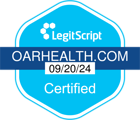5 Reasons Why Fitness Is A Powerful Anti-Alcohol Antidote

In This Article
- 1. Boosting Dopamine Levels To Rewire The Brain’s Reward System
- 2. Fitness Builds Structure And Provides Healthy Habits To Replace Drinking
- 3. Reducing Stress and Building Emotional Resilience Through Physical Activity
- 4. Building Community and Accountability Through Group Fitness
- 5. Improving Sleep Quality and Reducing Fatigue
- Conclusion
For many, including myself, fitness has proven to be more than just a way to stay in shape—it’s been a foundation for achieving and maintaining a healthy relationship with alcohol.
After years of struggling with habits that didn’t serve me, fitness helped provide structure, clarity, and a positive outlet for the stress and emotions that often lead people to drink. The transformative power of fitness isn’t just in the muscles it builds or the calories it burns; it’s in how it rewires our brain, supports our emotional resilience, and gives us a new lease on life.
Here’s a closer look at how fitness can play a pivotal role in managing alcohol use disorder (AUD) and why incorporating it into your recovery toolkit could be one of the best moves you make.
1. Boosting Dopamine Levels To Rewire The Brain’s Reward System
One of the biggest challenges with AUD is the disruption it causes to the brain’s dopamine system. Alcohol can hijack our natural dopamine production, causing us to seek out that next drink for a quick hit of reward. Over time, the brain’s reliance on alcohol for dopamine becomes entrenched, making it difficult to experience joy or fulfillment from everyday activities.
How Fitness Helps
Cardio-based exercises like running, swimming, and cycling naturally increase dopamine levels. By engaging in these activities, we can start to reset our brain’s reward system, allowing us to experience positive feelings without the need for alcohol. Regular cardio helps the brain release and regulate dopamine, reducing the intensity of alcohol cravings over time and helping you find joy in activities beyond drinking.
2. Fitness Builds Structure And Provides Healthy Habits To Replace Drinking
One reason alcohol becomes a crutch is that it fills a void. When we’re stressed, bored, or emotionally drained, it’s easy to reach for a drink to cope. Fitness offers a healthier way to handle those triggers by adding structure and purpose to our day. Having a fitness routine also encourages positive habits that become a stabilizing force in our lives.
How Fitness Helps
By setting up a regular workout schedule, whether it’s daily walks, weight training sessions, or group fitness classes, you create a positive routine that replaces time previously spent drinking. A consistent fitness routine promotes self-discipline and gives a daily sense of accomplishment, which helps counter the pull of alcohol as a “quick fix.” This structure becomes a keystone habit, supporting other positive changes and breaking the cycle of dependency.
3. Reducing Stress and Building Emotional Resilience Through Physical Activity
One major driver behind excessive drinking is the need to manage stress, but alcohol only masks the problem. Physical exercise, especially high-intensity or endurance workouts, has been shown to reduce levels of cortisol (the body’s primary stress hormone) and improve overall mood.
How Fitness Helps
Exercise releases endorphins, serotonin, and norepinephrine—neurochemicals known as the body’s natural mood lifters. Regular workouts help lower anxiety and increase emotional resilience, making it easier to cope with life’s challenges without alcohol. For people managing AUD, fitness provides a way to channel stress constructively, allowing the mind to process and release negative emotions through physical exertion rather than drinking.
4. Building Community and Accountability Through Group Fitness
Isolation and loneliness are common experiences for those struggling with AUD, often intensifying the urge to drink. Fitness, however, can offer a healthy and positive way to connect with others who are also pursuing self-improvement.
How Fitness Helps
Joining a group fitness class, a running club, or even an online fitness community provides accountability, social support, and camaraderie—all essential components of successful recovery. In these settings, you’ll find people who share your goals, and you’ll feel encouraged to stick to your fitness routine. Being part of a group gives you a sense of belonging and helps reinforce your commitment to healthier habits, reducing the isolation that can lead to alcohol cravings.
5. Improving Sleep Quality and Reducing Fatigue
Alcohol may seem to aid in relaxation, but it often leads to poor sleep quality, leaving us groggy and fatigued. Poor sleep and constant fatigue can lead to a vicious cycle, as we’re more likely to drink again to cope with the lingering tiredness and irritability.
How Fitness Helps
Engaging in regular exercise can greatly improve your sleep quality. Physical activity promotes deeper, more restorative sleep cycles and helps regulate your circadian rhythm, reducing feelings of fatigue and low energy throughout the day. As your sleep improves, you’ll find you have more energy, better mood stability, and increased resilience to handle cravings, reducing your dependency on alcohol to cope with stress or exhaustion.
Conclusion
Fitness isn’t a cure-all, but for those battling Alcohol Use Disorder, it can be a powerful ally. The benefits of regular exercise extend far beyond the physical, impacting our mental, emotional, and social well-being in profound ways. By boosting dopamine levels, building structured routines, reducing stress, fostering accountability, and improving sleep, fitness helps us regain control over our lives and reconnect with our authentic selves.
If you’re ready to make a change, consider incorporating fitness into your recovery journey. You’ll likely find, as I did, that exercise isn’t just about improving your body; it’s about creating a life where you can thrive without alcohol. Take it one step at a time, surround yourself with a supportive community, and lean into the power of fitness to fuel your path to freedom.
About The Author
Jesse is the founder of Altum Fitness and host of the Sober Strength podcast. He is a USMC veteran, certified fitness trainer and health coach, and former healthcare executive. Jesse started Altum Fitness in 2023 with the mission to help people discover and maintain healthy habits to live deep, strong, meaningful lives. Jesse resides in Colorado with his wife, Meghan, and their three beautiful children.
Related Articles
- How It Works
- Alcohol & Health
- Alcohol Misuse & Alcohol Use Disorder
- Strategies to Drink Less or Quit
- Treatment Options
- Medication-Assisted Treatment
- Recovery Stories
- Member Stories
- Moderation Stories
- Sobriety Stories
- ¹ Oar Health membership plans include access to the Oar Health platform, virtual consultations with a healthcare professional, and medication if prescribed by a healthcare provider. 3 month membership plan costs $297, equating to $99/mo.
- ² Self-reported by members after 6 months of Oar Health membership.
- ³ Verywell Health survey of Oar Health members, published March, 2023.
- ⁴ Prescription medication is available only if prescribed by a licensed clinician.
- ⁵ Compounded medications are prepared based on a prescription from a healthcare provider. They are not reviewed by the FDA for safety or efficacy.




